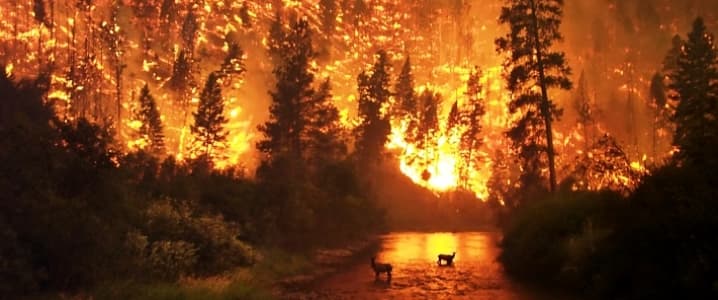First by poison (Aliso Canyon), then by gas explosion (San Bruno), and now by fires (Northern California). This is no joke. There’s an almost biblical cast to crises related to California’s electric and gas utilities.
Yesterday, another shoe dropped for utility investors. PG&E Corp. omitted both common and preferred stock dividends. Since the company's shares declined about 14 percent in a day, it seems that investors didn’t fully anticipate these actions.
In a recent article, we wrote about trust and the public’s faith in local political institutions like state and county government. This issue comes up again here.
At this point, Californians should ask themselves a basic question: Who should provide electric and gas service? There are two main choices.
Either the state or one of its political subdivisions owns and operates the utilities or private, for-profit utilities continue to do so. A third alternative under consideration elsewhere is for local cooperatives to operate non-profit entities, but so far, no such agencies operate on the scale required in California.
Yesterday’s dividend cut announcement by PG&E laid the blame for this action squarely at foot of California’s courts. Specifically, the company cited the court’s "inverse condemnation” doctrine. From the perspective of PG&E’s management this means, “Even though we don’t believe we caused those fires, we’ll probably still have to pay liability settlements of large but indeterminate amounts.”
Related: The Man Behind The Oil Price Rally
But this only tells half the story. What happens after the flames are extinguished and life gradually returns to normal? The utility companies will rebuild their destroyed systems, reconnect customers and shortly thereafter seek payment for their extensive work from the state’s public utility commission.
But there’s always something. Could state regulators in good conscience compensate the states’ utilities in full for these new (rebuild) investments if the courts found them legally liable for causing these conflagrations in the first place?
Given the accumulated level of public grievance (real or imagined) as well as emotion, this issue may migrate into the political realm. If so, politically sensitive regulators may find it difficult to fully and adequately (in the minds of investors) compensate private, for-profit utilities for these system rebuilds in recently ravaged areas. This line of reasoning may also have been behind management’s decision to omit dividends.
If we look to the future, the basic utility issue in California goes back to trust. Who will do a better job of providing a basic, essential services like electricity and gas?
It’s now possible that the state’s three investor-owned utilities (PG&E, SCE and SDG&E) have collectively lost the public’s confidence. There are other locally available utility ownership options on offer in California, notably the Los Angeles Department of Water and Power (LADWP) and the Sacramento Municipal Utility District (SMUD) which together serve 5.4 million people.
If the courts as well as the state’s PUC ultimately prove less than financially supportive, the individual ratepayers and investors both stand to lose. The desire for punishment in the present context is understandable. But ultimately it doesn’t help keep the lights on and eventually ill serves the broader community as well with deteriorating public services.
Related: The Drastic Drop Off In U.S. Oil Imports
In addition, we haven't even begun to address the lingering environmental uncertainty here. Are wildfires of this type and magnitude the ‘new normal’? If the courts continue to blame utilities for these fires and the state's utility commission piles on punitive regulatory rulings afterward, it will be impossible to run a for-profit utility in California.
Rather than being consumed with protracted legal and regulatory fights, perhaps Californians would be better served by focusing immediately on government or not-for-profit utility ownership as an alternative. In other words, buy out the existing utilities, transform them into not-for-profit entities—and get on with life.
By Leonard Hyman and Bill Tilles
More Top Reads From Oilprice.com:
- Venezuela To Launch ‘Petro’ Cryptocurrency
- The Stunning Energy Cost Of Tesla’s Semi-Truck
- Gasoline Prices Begin To Fall As Demand Tapers Off



















"What they can't control are droughts and crazy liberal judges and legislators." That is precisely our point. If PG&E's management can no longer effectively control (or limit the damage from) these things, then perhaps it is becoming impossible to operate a for profit business.
Hi John Scronce,
Unlike the state dam example you cited, municipal electric utilities pay for themselves via custoner's electric bills. As a result they typically have access to all the "maintenance" funds they need. If not they raise prices to cover their costs.